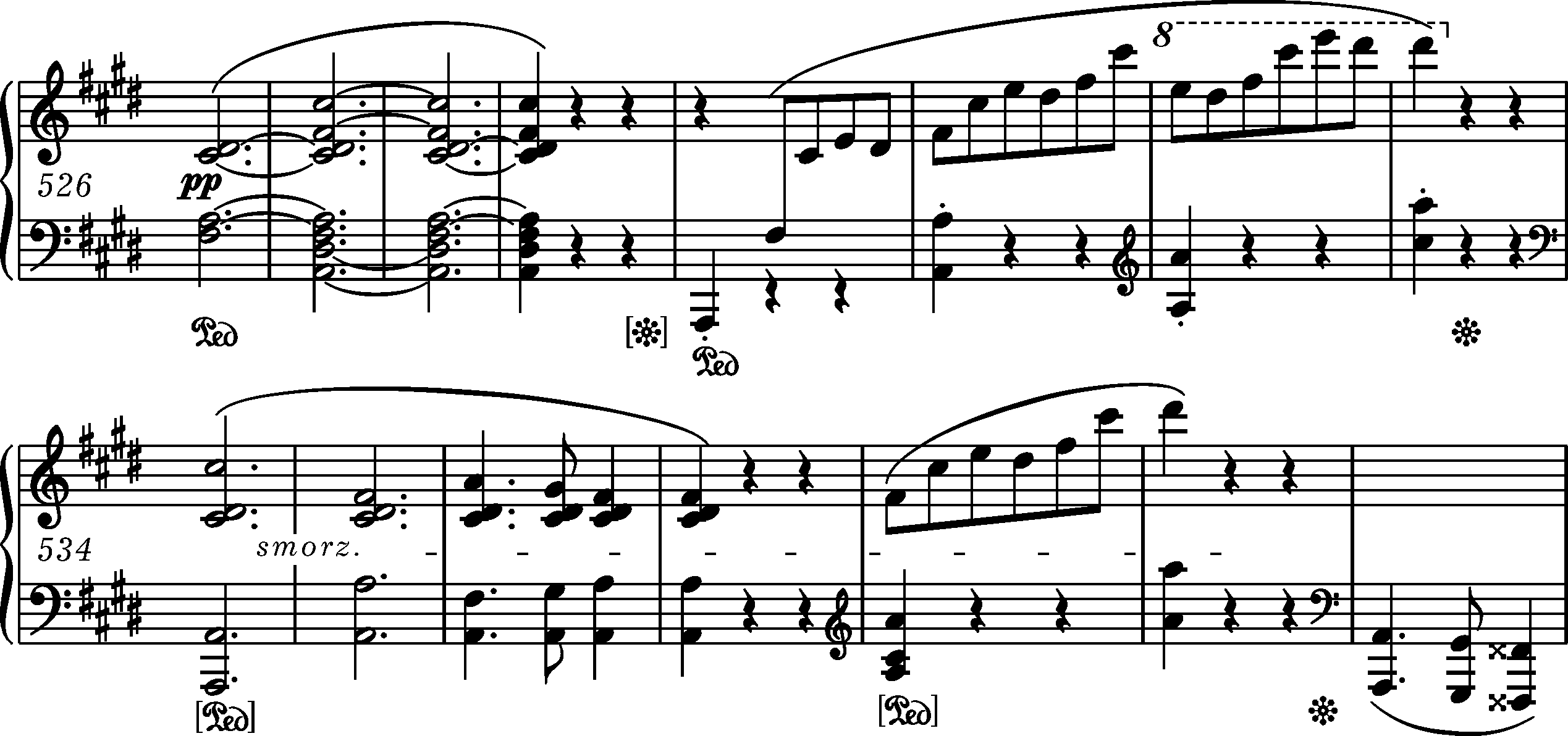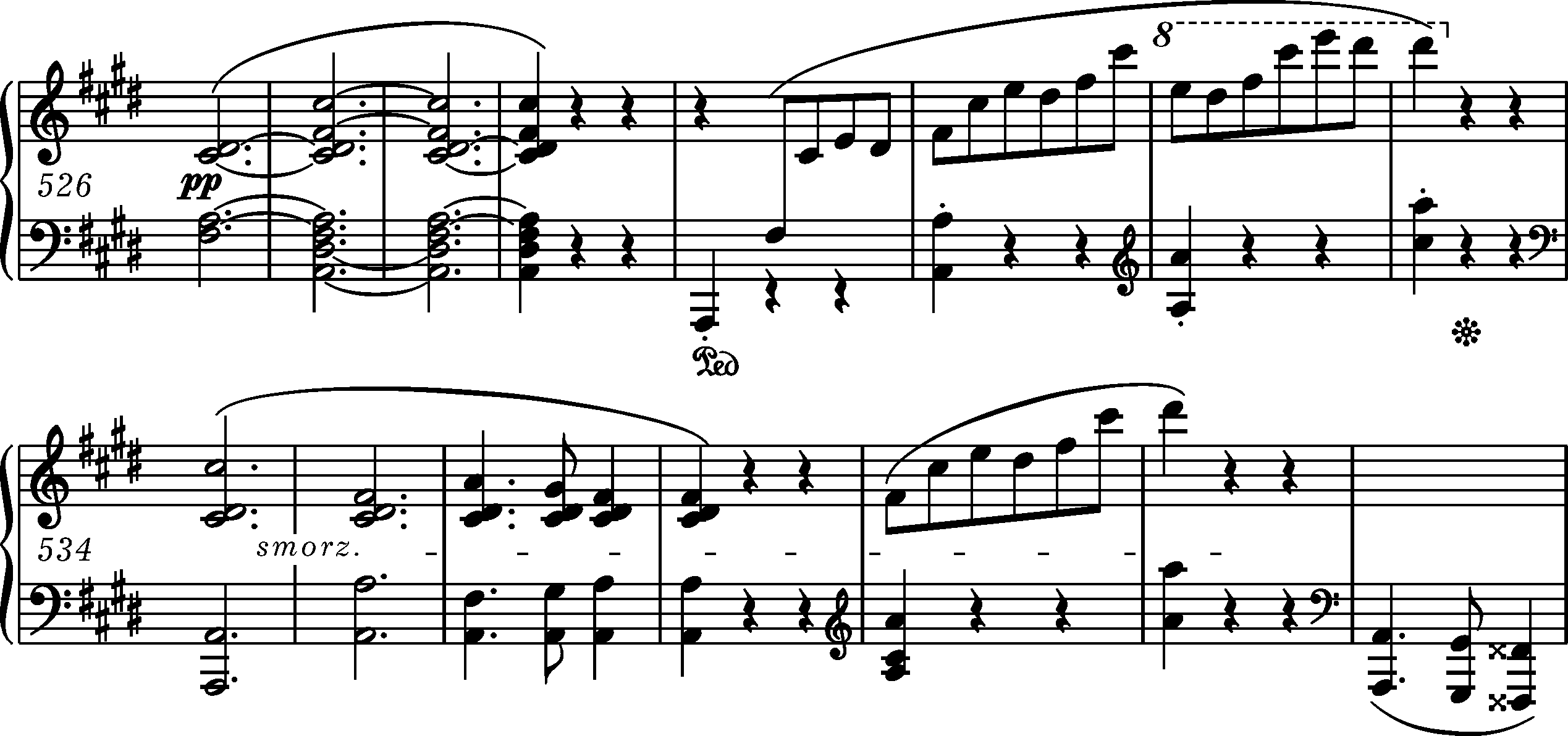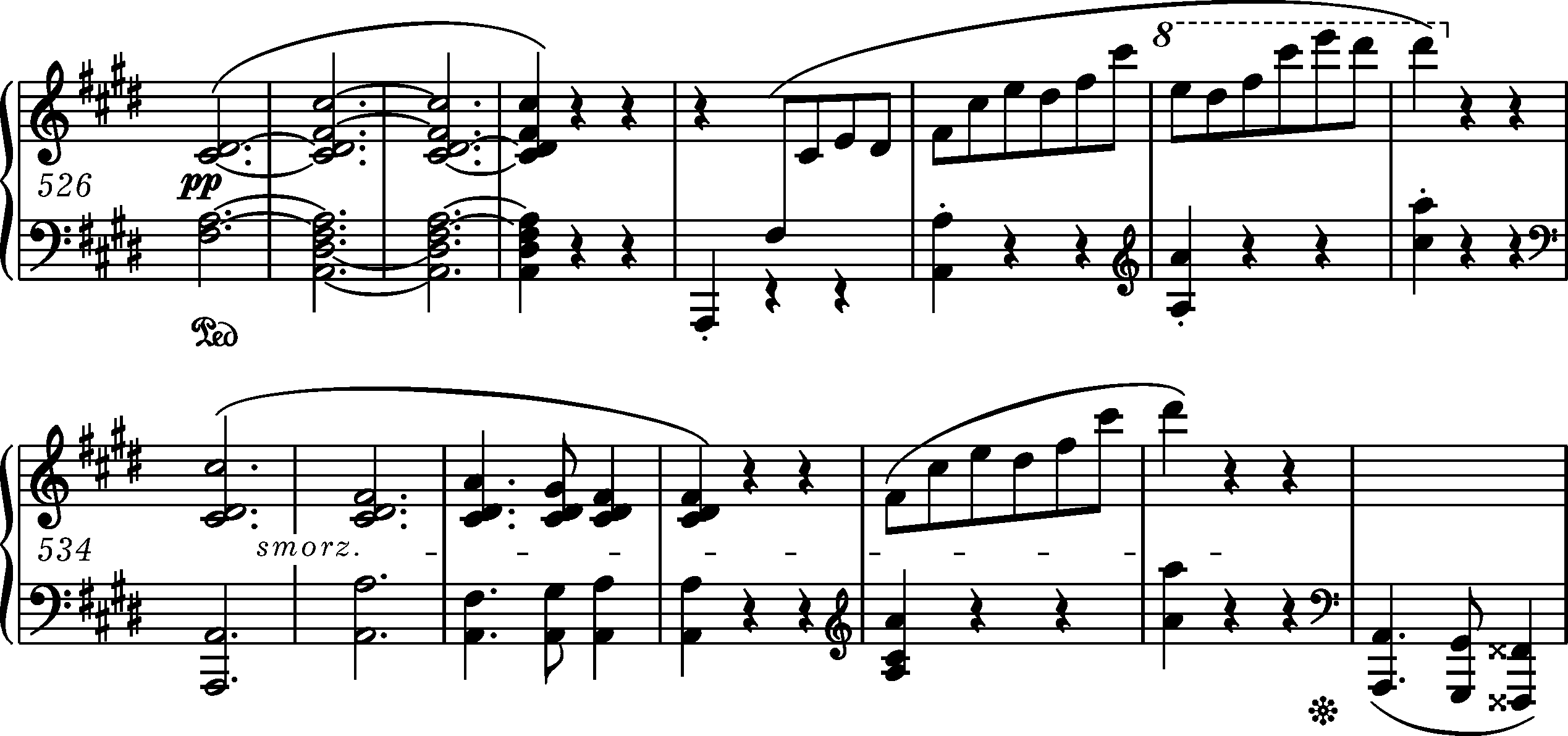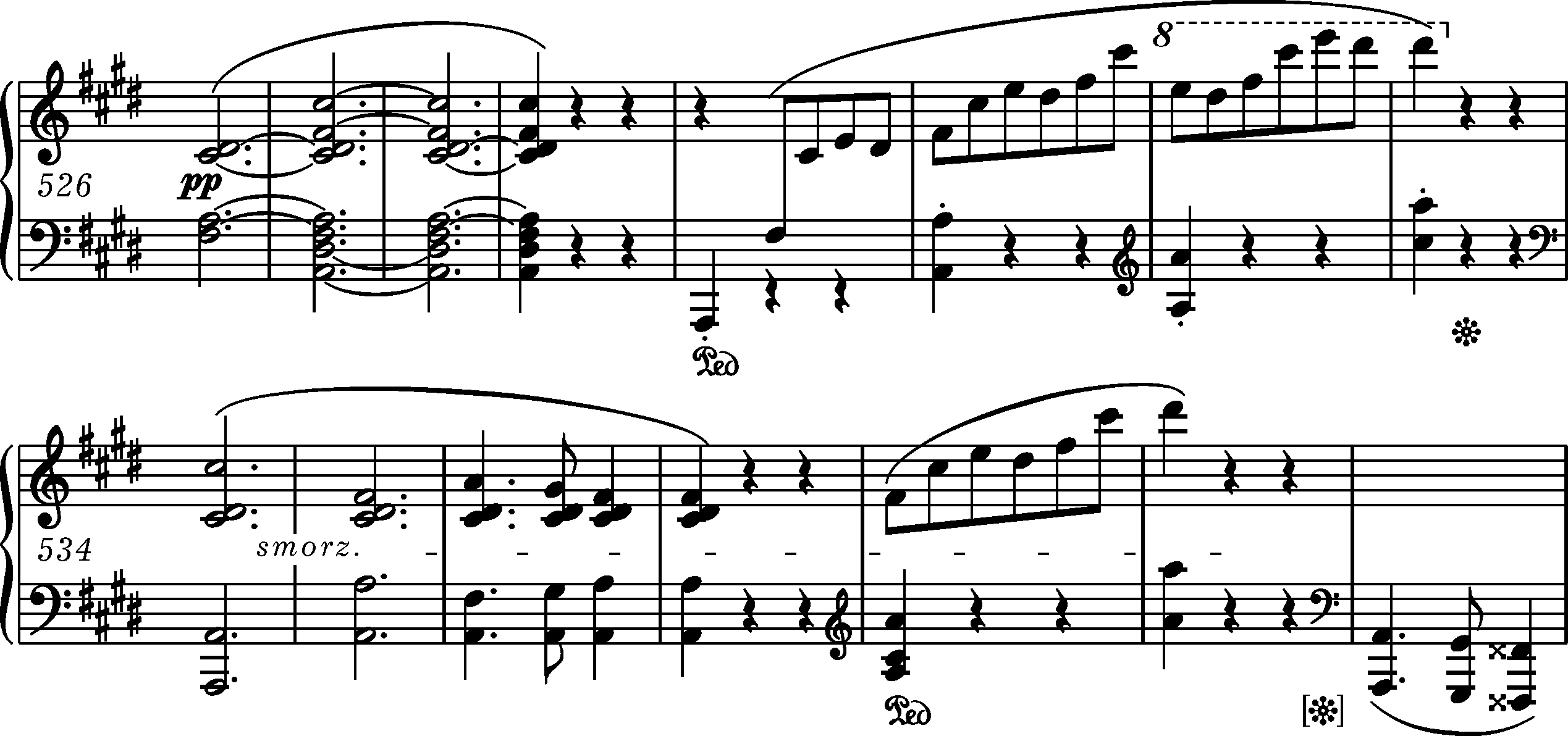



Pedalling of bars 526-539 causes interpreting difficulties as the notation of individual sources differ and, moreover, none of the sources' notation is fully precise.
The most intriguing is the notation of EE and GC: two subsequent  marks (in bars 526 and 530) as well as two subsequent
marks (in bars 526 and 530) as well as two subsequent  marks(in bars 533 and 539). The simplest explanation of such notation could be omission of the
marks(in bars 533 and 539). The simplest explanation of such notation could be omission of the  mark in b. 529 and
mark in b. 529 and  mark in b. 534 or 538:
mark in b. 534 or 538:

Both such supplemeted pedalling versions are possible to accept form the harmonic point of view, in each of them however, there is inconsistency in sounding - if on pedal is enough for bars 534-539, why change the pedal in b. 530? And if pedalling applies only to the quavers passages in bars 530-533 and 538-539, then the pedalling in bars 526-529 seems redundant (cf. bars 518-521). Consistency of both sources proves that this notation appeared already in [A1], and its best explanation is, according to us, the composer's unintentional retention of two different (mutually excluding) ways of pedalling - first applying to bars 530-533 only and second applying to the whole of bars 526-539:


In the GE pedalling we can notice the imprecisely copied notation of GC (omission of  in b. 530) or it partial correction (purposeful omission of the mark).
in b. 530) or it partial correction (purposeful omission of the mark).
In the case of FE the situation is simpler: pedal in bars 530-533 raises no doubts , however the second, applying to bars 538-544, obviously erroneous, may be easily corrected by an addition in bars 539 and 541 of the marks from EE and GC:

Finally, without rejecting other options, we propose two most probably authentic variants of the bars:
- pedalling of quaver passages in bars 530-533 and 538-539. This variant results form the FE notation and expands on one of the concepts written out in [A1] (→EE,GC);
- this whole passage with one pedal, which most probably was written out as the second possibility in [A1] (→EE,GC).
Now, the question which is the earlier option must remain unsolved:
-
Chopin may have started with pedalling for bars 530-533, and then added the
 mark in b. 526 together with the appearance of the f
mark in b. 526 together with the appearance of the f minor chord with the d
minor chord with the d sixth and the
sixth and the  mark in b. 539, where this chord resounds. While writing [A2] , he may have rewritten the original vesrion and supplemented it by a mark in b. 538 and probably 539;
mark in b. 539, where this chord resounds. While writing [A2] , he may have rewritten the original vesrion and supplemented it by a mark in b. 538 and probably 539; - The version of the long pedal may have been original (bars 526-539), and changed (inattentively) as early as in [A1] (→EE,GC). The altere4d pedalling was then notated and supplemented in [A2].
Compare the passage in the sources »
category imprint: Differences between sources
issues: Inaccuracies in FE, No pedal release mark
notation: Pedalling



